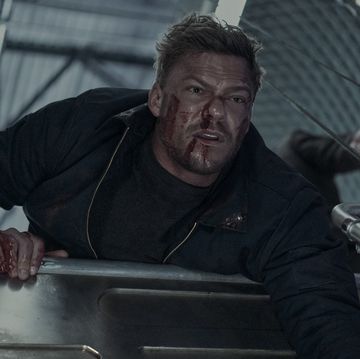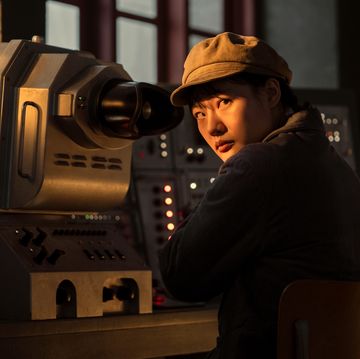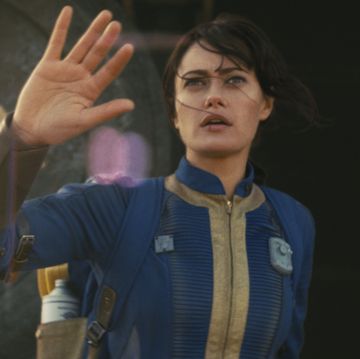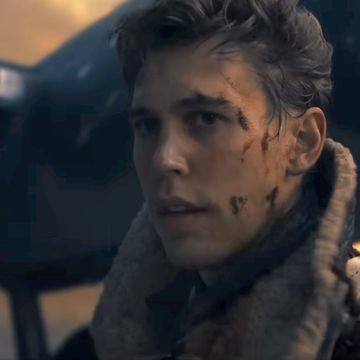Twin Peaks started by asking us a simple question: "Who killed Laura Palmer?" Which, surprisingly, turned out to be groundbreaking.
That's because, when Palmer's body was discovered in the series' pilot episode in April 1990, the Beautiful Dead Girl™ trope was totally new. Sure, Perry Mason, Murder She Wrote, and Columbo revolved around the deaths of characters (some of them young women), who they were, and how they died, but each of those series subscribed to the standard 60-minute capsule formula. Victims were never more than a means of showcasing the protagonist's competence, and we never saw them again after the mystery was solved.
Laura, however, haunted us—but only because we spent time with her story.
Not much is known about the homecoming queen when Special Agent Dale Cooper shows up to investigate her murder. We eventually learn that she was popular, that she was a Meals on Wheels volunteer, and that she was missed and beloved by her family. But the magic of Twin Peaks exists less in the facts that it delivers outright than what we gleam from zooming in on what we couldn't see. Through Cooper, we learn about Laura's cocaine addiction, her sex work, her relationships with townsfolk outside her social circle, and, heartbreakingly, the sexual abuse suffered at the hands of BOB, the supernatural force that possessed her father and led to him killing her.
But outside of diary entries, flashbacks, recollections, and dream sequences, we don't see Laura with any control over her circumstances. We meet her after she's been wrapped in a plastic bag and left to rot, which essentially leaves her narrative and legacy to be largely determined by those who are investigating her. We don't learn about Laura through Laura—we learn about Laura by piecing together what she left behind. And thus a new genre was born.
Dead girls now had pop-culture currency. But where Twin Peaks widened its focus to explore demonic entities and realms eventually reserved for The X-Files, its successors boasted a little less imagination. Network series like CSI and Law and Order: SVU focused a little more on victims than its preceding crime shows, but each tended to sensationalize the actual crimes more than the lives of the women who suffered from them. Similarly, Criminal Minds did the same (but on steroids) by taking care to show the gruesome ends of any and all female victims while depriving most of backstories or wider context. Dead women weren't so much people as they were props. And unlike Laura Palmer, there wasn't enough time per episode to find out who they really were. Fortunately, cable stepped in.
In 2007, two shows premiered which focused as much on the victim as it did on the circumstances: The Killing, a Danish detective series that closely followed the formula laid out by Twin Peaks (minus the supernatural), and Veronica Mars, a film noir-esque CW series that saw its P.I. namesake vow to solve the mystery of who killed her best friend.
But while Veronica Mars, a smart, funny, and important show that tackled everything from rape to abuse to racism to classicism, only lasted three seasons, The Killing ended up launching an American remake in 2011. Now, we would get to watch as two American detectives set out to answer the question, "Who killed Rosie Larson?"—sparking even more Twin Peaks comparisons.
Like Laura, Rosie was found in a garbage bag and originally presumed to have led a lovely and ordinary life. And also like Laura, her secret self ends up being exposed by investigators who shed light on the underbelly of her hometown. More tragically? Rosie herself says even less than Ms. Palmer. Which is somehow eclipsed by the murder of 28-year-old Dora Lange, the victim at the centre of HBO's first season of True Detective who says and does absolutely nothing (because her sole arc is to be dead and tied to a tree).
Which is precisely why we needed a shake-up. Twin Peaks may have introduced the Beautiful Dead Girl trope, but bastardized versions of the original tended to increasingly use slain women as vehicles through which men in power (the outlier being Veronica Mars) told their stories. None of us should've been shocked that it took teen franchises to sound the alarm.
In 2010, ABC Family premiered Pretty Little Liars, a series based on the books that uses the disappearance/death of queen bee Alison DiLaurentis to bring her former clique together to figure out what happened. But unlike other murder-mysteries, Alison is given more agency: We see her primarily in flashbacks, but her narrative is as compelling and interesting as that of her friends. She's presented less as "victim" and more as an equal—hell, even as a straight-up villain. Which is similar to Gone Girl; while the first half of the book (and the David Fincher-directed film adaptation) treats the disappearance of Amy Dunne as a means of introducing us to her husband, the script is flipped when we learn she's faked her own death to frame him for murder. (Which comes as a shock when you realize she's even forged a whole diary.)
Robin Wasserman's Girls on Fire—a novel published in May 2016—throws a similar curveball, this time enlisting a teen boy as the victim instead of the stereotypical girl. Then enter Riverdale, a CW show inspired by Archie comics that marries the pulpy worlds of Twin Peaks and Veronica Mars as townsfolk scramble to solve the murder of Jason Blossom, who shows up lakeside with a bullet in his head. But where the former saw its hero in the way of a grown-ass, pie-loving man, Riverdale followed the pattern set by Veronica Mars (and iZombie): In the wake of their classmate's death, it's Riverdale's young people who end up piecing the mystery together—which is a move for the best, since all adults involved tend to come across as bumbling idiots. (Even the Southside Serpents, TBH.)
Which is an important evolution. Relevant entertainment can't be sustained on a single trope that leads to a limited number of story options. Twin Peaks was interesting because it was different, because it took risks, because it was surprising, and because it gave teens dimension and depth while framing adults as humans (read: messy and flawed). But to mimic its formula serves no one. There was a reason network series began feeling played out and boring, or why most of us stopped watching The Killing in Season Two—there's only so many dead girls you can see before you stop caring. And that's an issue. First, because you'll never care about the story if you don't care about the victim; second, because a young dead women should always be shocking. (I mean, hello.)
So now, series like Riverdale, movies like Gone Girl, and books like Girls on Fire are doing what Twin Peaks did in 1990. They're taking something as tragically normal as murder and reclaiming control. In today's pop culture, anybody can be a victim—and those victims have stories. And for that, I guess, we've got the sad saga of Laura Palmer to thank.















